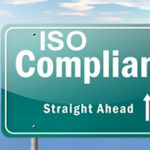July 1, 2020
The Difference Between 5000K and D50
The international standard for viewing color in graphic arts and photography is ISO 3664:2009. The standard specifies a color temperature of 5000K and spectral power distribution of CIE D50.
Correlated Color temperature is measured in Kelvins on a scale of 1,000 to 10,000. It describes the color of light and correlates to the color a black iron radiator would emit when heated to a specific temperature. So, 5000K is the color of a black radiator when it is heated to 5000 degrees Kelvin.
CIE D50 is an ideal representation of a light source that approximates daylight and follows a CIE standard. It is defined by a theoretical light spectrum. The closer a light source is to this D50 light spectrum, the closer it is to being a true D50 illuminant.
Most 5000K lamps do not meet the requirements to be classified as D50 and therefore should not be used for the visual evaluation of color. Using a 5000K light source that is not close to the D50 curve will result in poor color decisions as the color rendition will be different than when viewed under a more accurate D50 specification.
Save yourself time, get faster approvals, and improve efficiency by using D50 lamps that conform to the ISO 3664:2009 viewing standard. All GTI Graphiclite viewing booths and replacement lamps conform to the D50 requirements of ISO 3664: 2009.

GTI Graphiclite lamps (left) provide a much closer match to the D50 curve, resulting in greater color fidelity and tighter compliance to industry standards.







